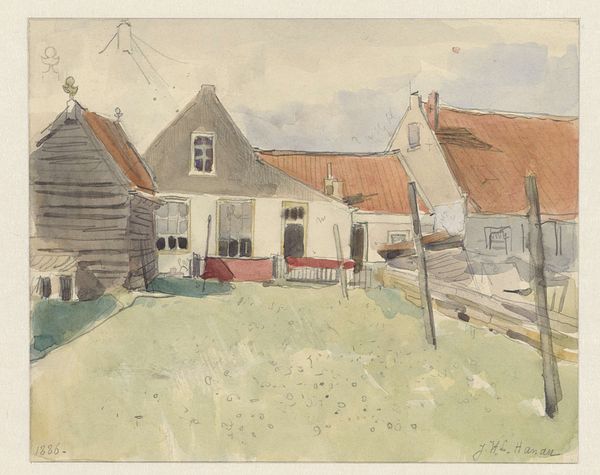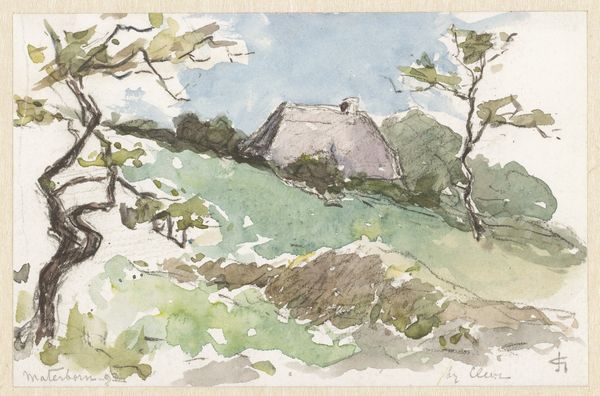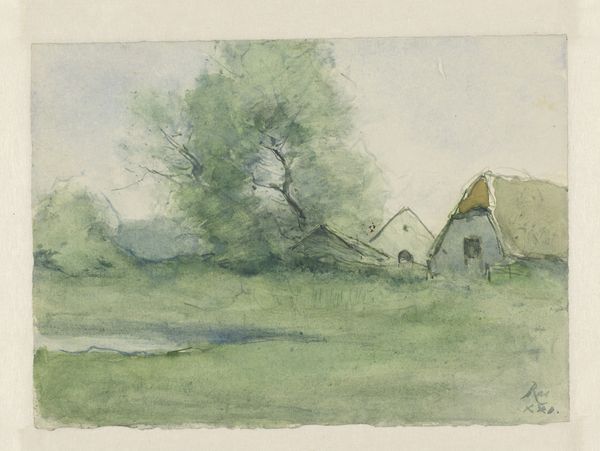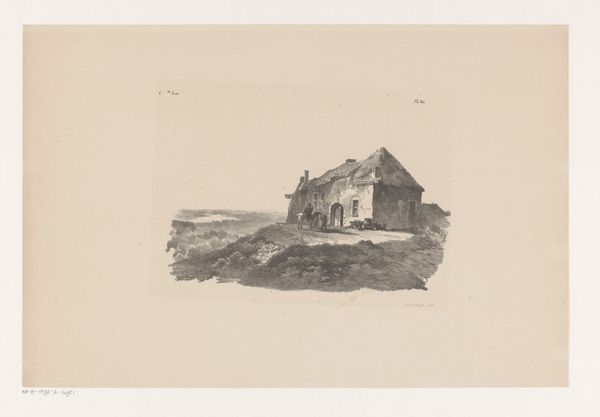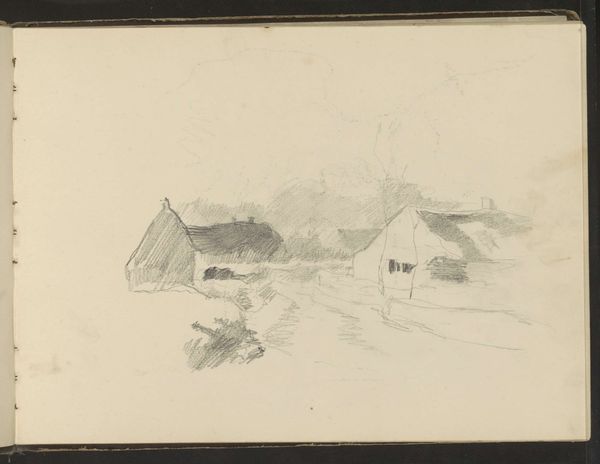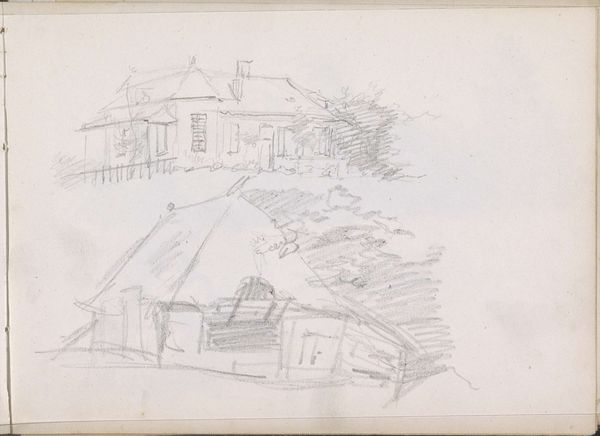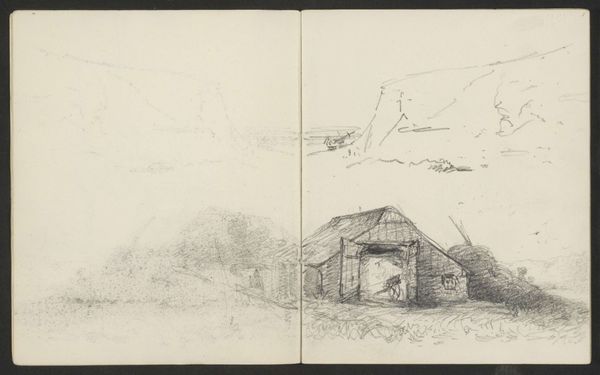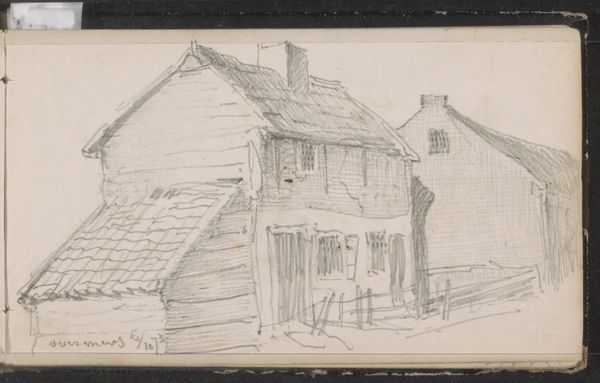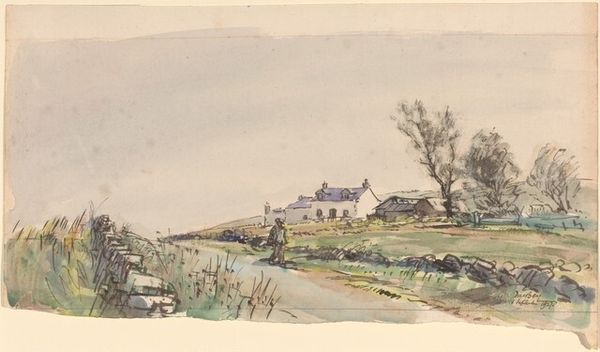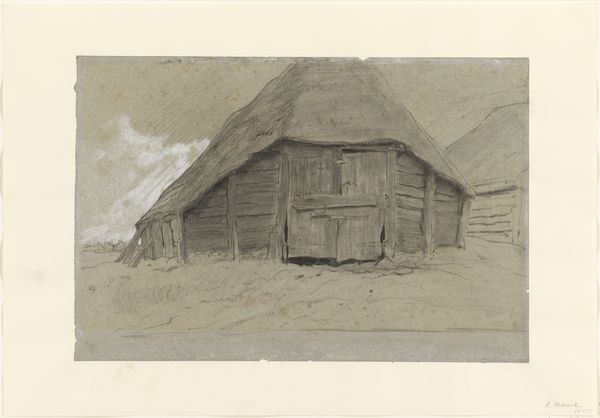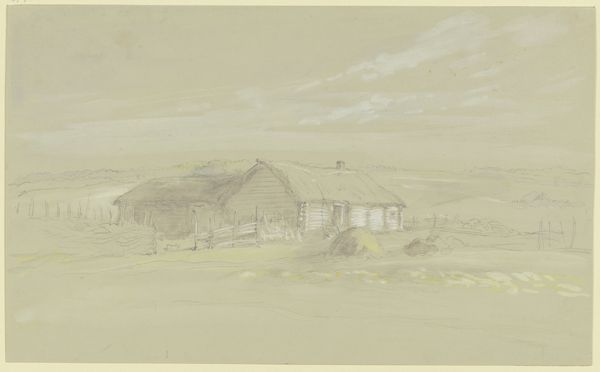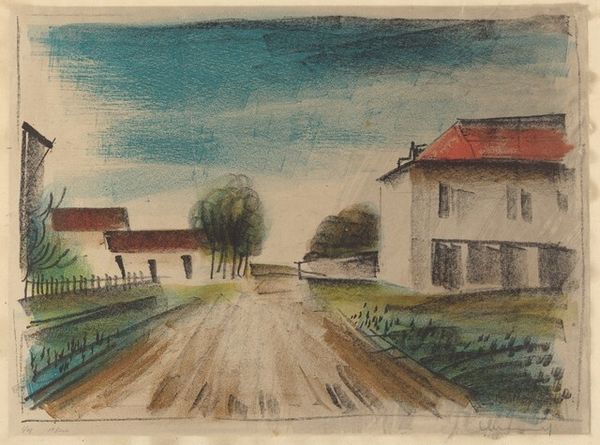
plein-air, watercolor
#
light pencil work
#
quirky sketch
#
impressionism
#
plein-air
#
sketch book
#
incomplete sketchy
#
landscape
#
personal sketchbook
#
watercolor
#
sketchbook drawing
#
watercolour bleed
#
watercolour illustration
#
sketchbook art
#
watercolor
Dimensions: height 170 mm, width 520 mm
Copyright: Rijks Museum: Open Domain
Curator: Here we have a sketchbook page by Jan Hoynck van Papendrecht, titled "Boerderij bij Laren en de achterzijde van een hooiwagen," dating from 1888. It features both a watercolor study of a farm and a delicate pencil drawing of a hay wagon. Editor: Immediately, I’m struck by the contrast between the two halves. The farm, rendered in soft watercolor, feels substantial and lived-in, while the hay wagon, sketched in pencil, seems almost ghostly, like a fleeting memory. Curator: The contrast speaks to the rapid changes occurring in rural life during this period. Van Papendrecht captures both the enduring presence of agricultural structures and the increasing mechanization of farming. We're seeing a society grappling with its past and its future. Editor: Absolutely. And the choice of media amplifies that. Watercolor, with its fluidity and tendency to bleed, lends itself to capturing the atmospheric qualities of the landscape, whereas the precise, almost technical quality of the pencil drawing highlights the intricacies of the hay wagon. Curator: There's also something to be said about the act of sketching outdoors, "en plein air," as they would. Artists at the time began depicting everyday life more often, turning their back on more traditionally grand themes and engaging more intimately with society's workforce. Editor: That intimacy feels crucial, doesn't it? By placing the farm and the wagon side-by-side, the artist forces us to confront the labor embedded within these seemingly idyllic rural scenes. We see not just beauty, but also the tools and infrastructure that sustain it, and perhaps an implied commentary about wealth and exploitation. Curator: These sketchbook leaves also speak to the educational methods used by the artist. It highlights their attempts to capture both their physical surroundings, like a farmstead, but also their study of technical machinery in pencil, likely to study their dimensions. Editor: It’s interesting to see how a seemingly simple sketchbook page can open up a wider conversation about labor, technology, and the evolving relationship between humanity and the land, especially as it relates to the rise of industrial labor. Curator: Indeed, the image is a great point of contemplation in trying to see the past and the way people viewed and expressed it, while at the same time providing useful insight for current social matters. Editor: I'm left with a renewed appreciation for how art helps us excavate the layered narratives of our collective past.
Comments
No comments
Be the first to comment and join the conversation on the ultimate creative platform.
